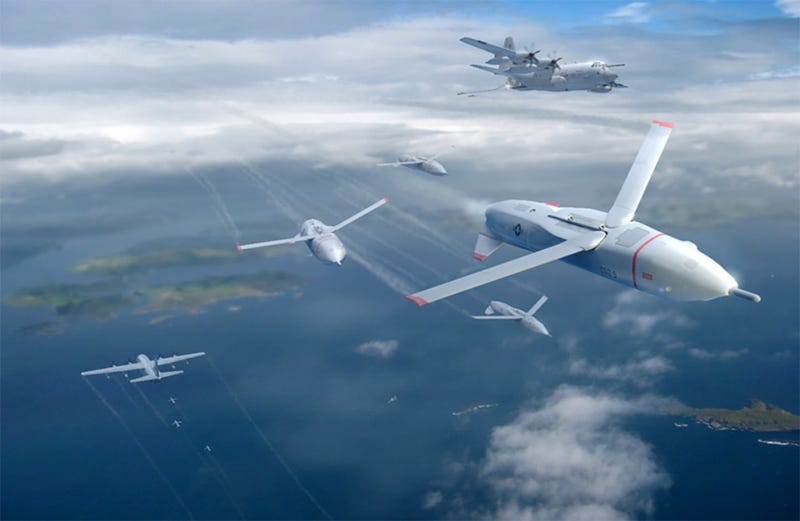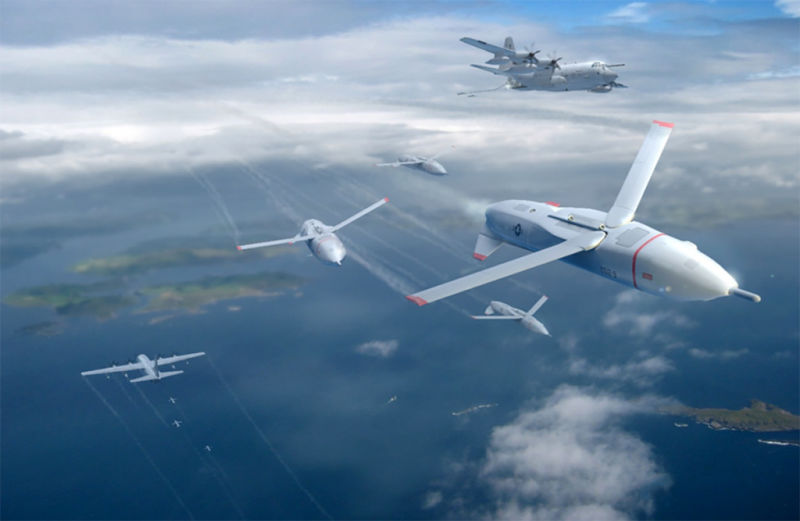
DARPA is working on a new terrifyingly-named “Gremlins” program to develop swarms of small, reusable drones deployed from aircraft over “denied” zones with the intention of intelligence gathering, radar jamming, and other “friendly” operations… for now.
The “Gremlins” program will be be unique in its ability to reuse small, lightweight, and relatively inexpensive drones in swarms in contrast to either disposable platforms or large, expensive drones, like the Predator, which deal with costly maintenance.
The program was named “for the imaginary, mischievous imps that became the good luck charms of many British pilots during World War II,” according to DARPA.
Advertisement
The “Gremlins” are currently planned to carry out reconnaissance and radar-jamming operations, but could easily be modified for less “friendly” operations.
There’s a short list of four teams working on the program, including Lockheed Martin, Dynetics, Composite Engineering Aeronautics, and General Atomics who already develop the infamous Predator drone. The first deliverable is scheduled in a year. After that, two teams will be cut, and a winner between the remaining two will be determined by 2020.
Sponsored
The new drones are expected to cost around $700,000 each according to WIRED, and DARPA has requested a three hour flight time and 20-mission operational lifespan. The drones are to be developed using existing technologies, and will be launched from existing aircraft. The retrieval of the reusable drones has been left up to the four development teams to sort, but will go a long way in making the program far more efficient than existing drone capabilities.
The drones will be able to communicate information between each other in the swarm, and transmit intelligence to field operators on the ground or teams back on base. It’s this swarm system that should more effectively penetrate hostile airspace, with a far larger allowance for the possibility of losing aircraft. Another member of the swarm should be there to fill the gap.
We’ll see which team comes out on top in 2020, but in the meantime, where were you the day the drone swarms invaded?
Advertisement















